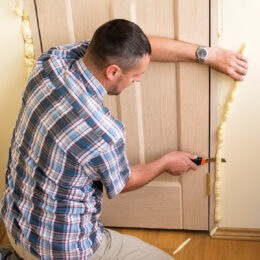
Stray voltage can be found in a variety of places, including farms along with old homes.
Each year, we like to inform and educate our members on what stray voltage is and alert them to the possible dangers. In past years, this article has targeted dairy farmers as they are more likely to experience the problem through the contact of the cows with milking equipment. Truth is, stray voltage can affect more than just dairy farmers. Full-time or hobby farmers with livestock can also experience issues as well as residential homeowners.
Stray voltage can occur when a weak electrical neutral connection and certain amounts of voltage pass through the equipment, looking for a place to go to ground. Some causes of stray voltage could be improper wiring, poor grounding, faulty equipment or poor connections. In a dairy situation, when a cow touches the stanchions, waterers or milking equipment, they can provide a better path to ground than what should be happening at the point of origin. This point of origin could be the utility’s transformer, the meter base or the member’s breaker panel. The hobby farmer could experience livestock contact when the animal touches a shed or gate that might have a bare wire or bad connection present.
Stray voltage has also been known to happen in a residential setting. This is typically seen in older homes when the homeowner is touching something metal or part of a metal plumbing fixture in the home. In the days of shallow water wells, when metal pipe was driven into the ground for a water source, some electricians would bond a neutral to the pipe for a better chance of an electrical ground. House plumbing was also done in galvanized steel or copper piping which would conduct the voltage.
In newer homes, the well is more than likely plastic with a plastic water line entering the house through a basement or crawlspace wall. This plastic well pipe would not be used as an extra ground for the electrical system.
If you suspect that you might be experiencing stray voltage, it might be a good idea to consider a stray voltage evaluation with a well-qualified electrical technician.



